
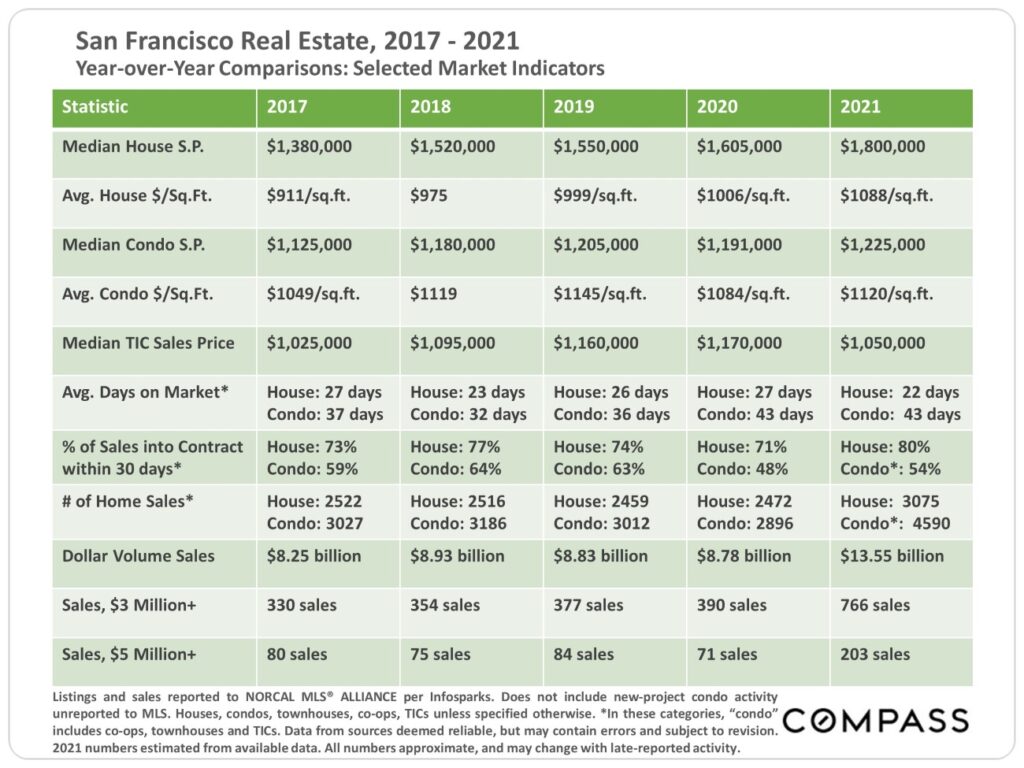
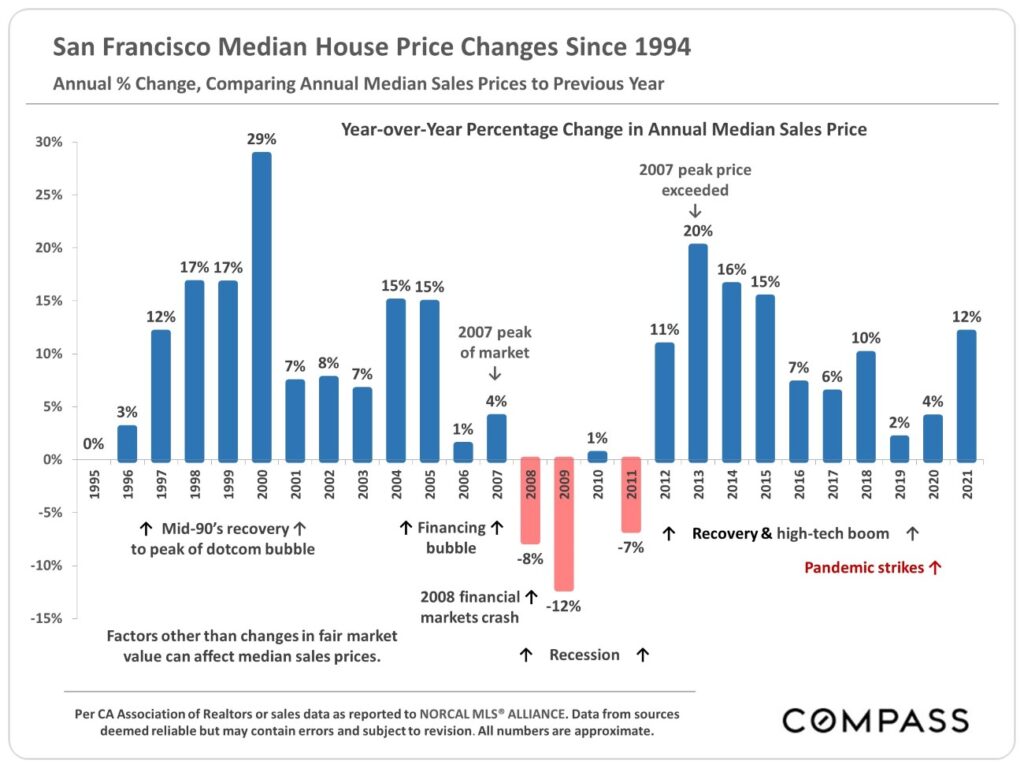
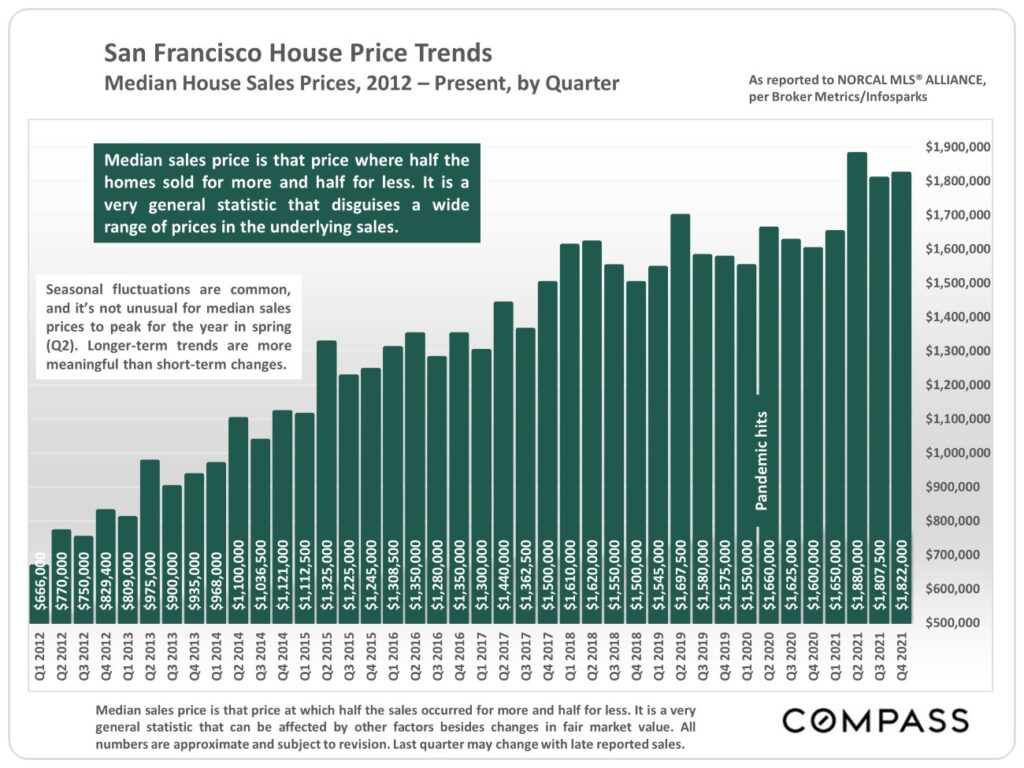
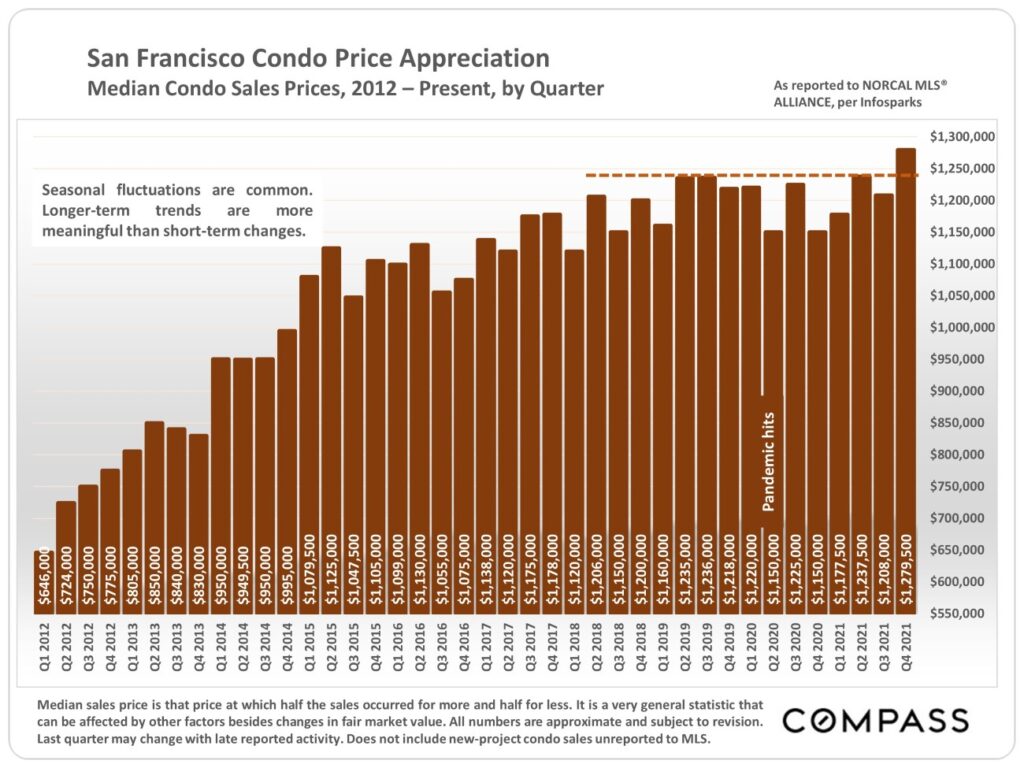
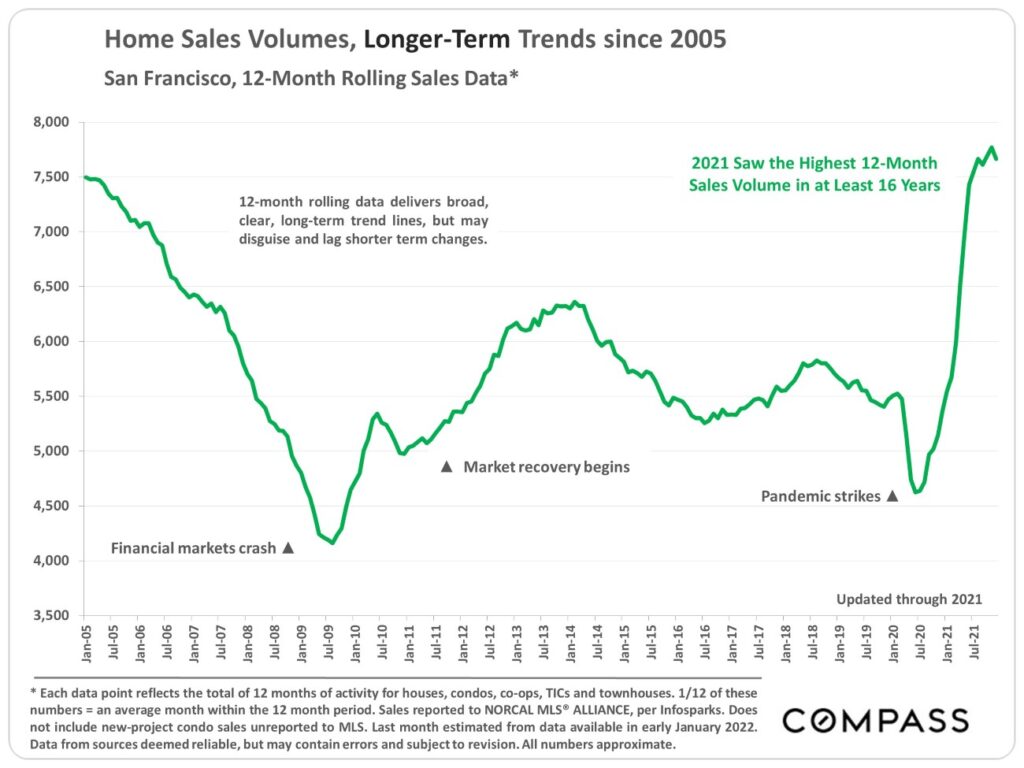
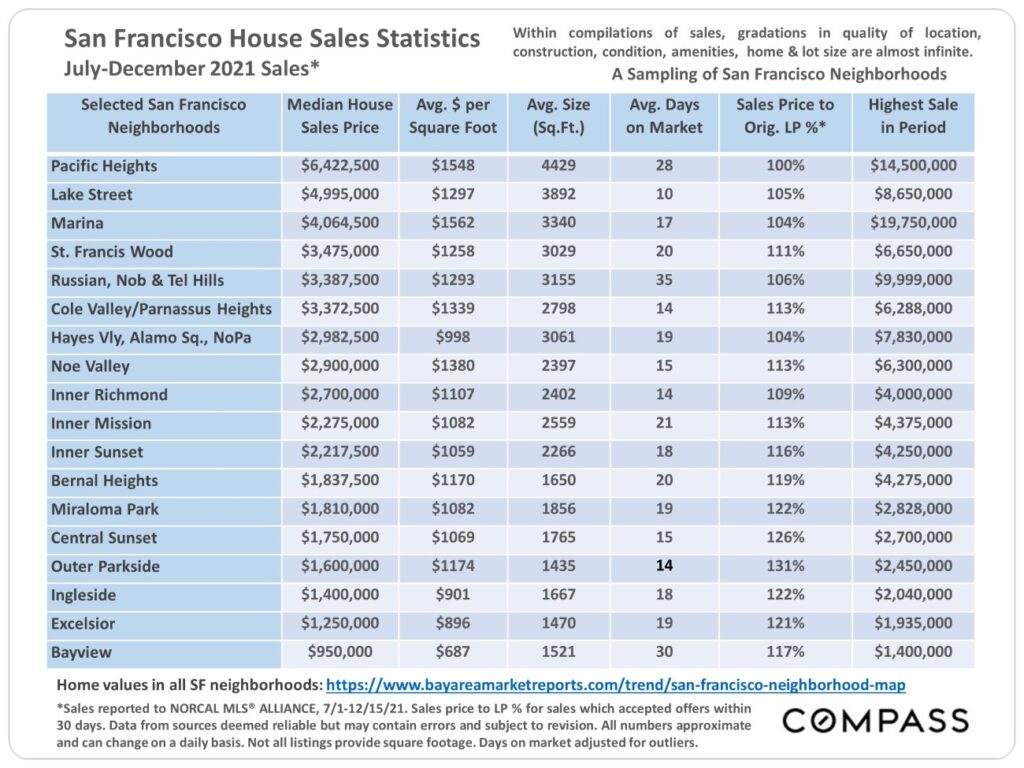
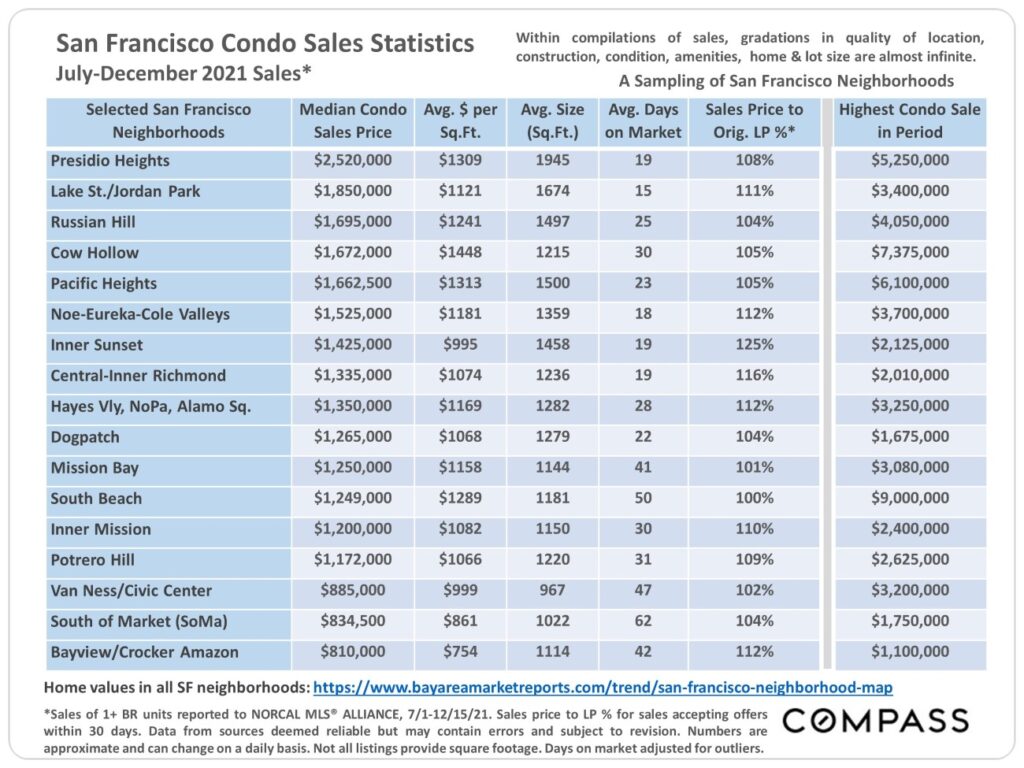
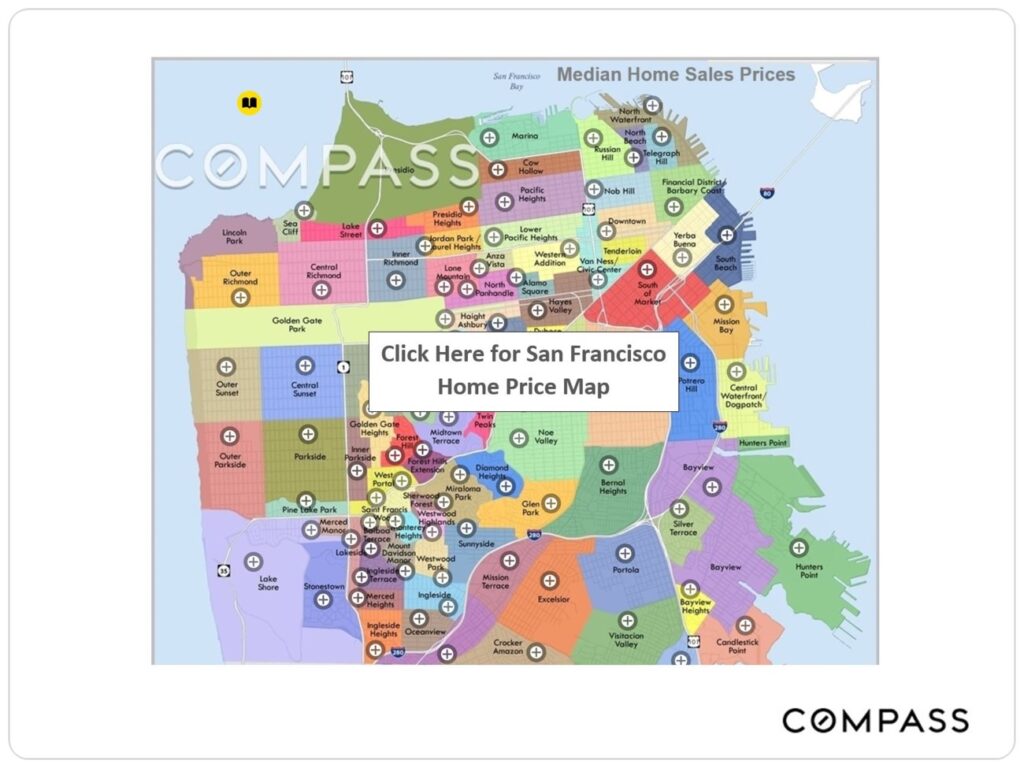
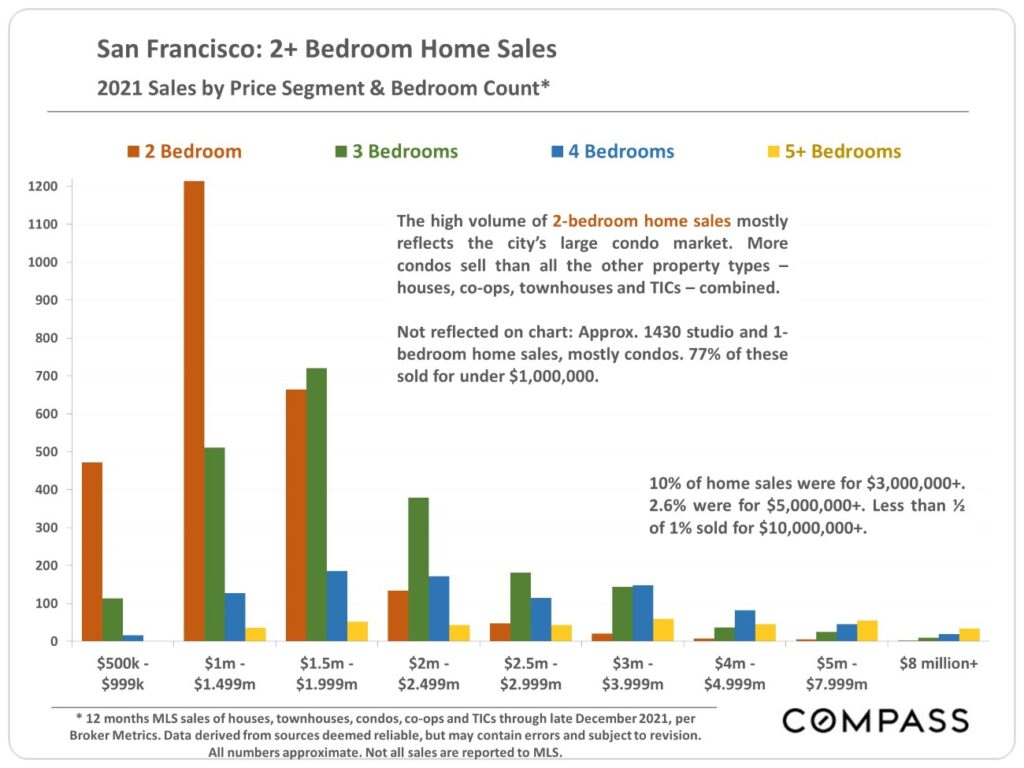
San Francisco Real Estate Market Report – January 2022
California Association of Realtors® 2021 CA Housing Market Survey – Highlights
CALIFORNIA ASSOCIATION OF REALTORS
61% of CA homes sold above asking price, the highest % in at least 30 years. Both the share of sales with multiple offers and the average number of offers received reached their highest levels since 2013. 2021 saw the shortest time-on-market to offer acceptance in 35 years. 60% of accepted offers were non-contingent (not subject to appraisal, financing, inspections, etc.). 20% of buyers paid all cash.
Most CA REALTORS® noticed at least one of the following changes in buyer preferences since the pandemic: Opting for bigger home (22%); less concerned about commute (22%); buying house instead of condo/townhome (21%); opting for suburban instead of city location (19%); choosing rural instead of urban or suburban location (13%)
29% of CA sellers planned to buy again in same county (lowest % in at least 16 years); 35% planned to buy in another state (highest % in at least 16 years)
Primary reason to move out of home county: Housing affordability (26%), quality of life (15%), closer to family (12%), 2nd home (12%), commute (6%), retirement (6%), ability to work from home (5%)
Single most important reason to buy: 1st time buyers – tired of renting (56%); repeat buyers – larger home (23%), better location (20%), investment or taxes (13%)
Vacation/2nd home sales reached highest level in 9 years: 7% of sales. Homes purchased for investment/rental: 9.5%. Sales to international buyers hit highest % since 2014: 5% of sales.
Housing affordability – the % of CA households able to afford median priced house – hit its lowest percentage since 2008 (despite historically low interest rates): 23% – 24% in Q2 & Q3 2021.
Survey sent to a random sample of 39,567 CA REALTORS®, geographically distributed across state. 1,908 valid survey responses = response rate of 4.8%. Margin of error for survey was +/- 2.2% at a 95% confidence level.
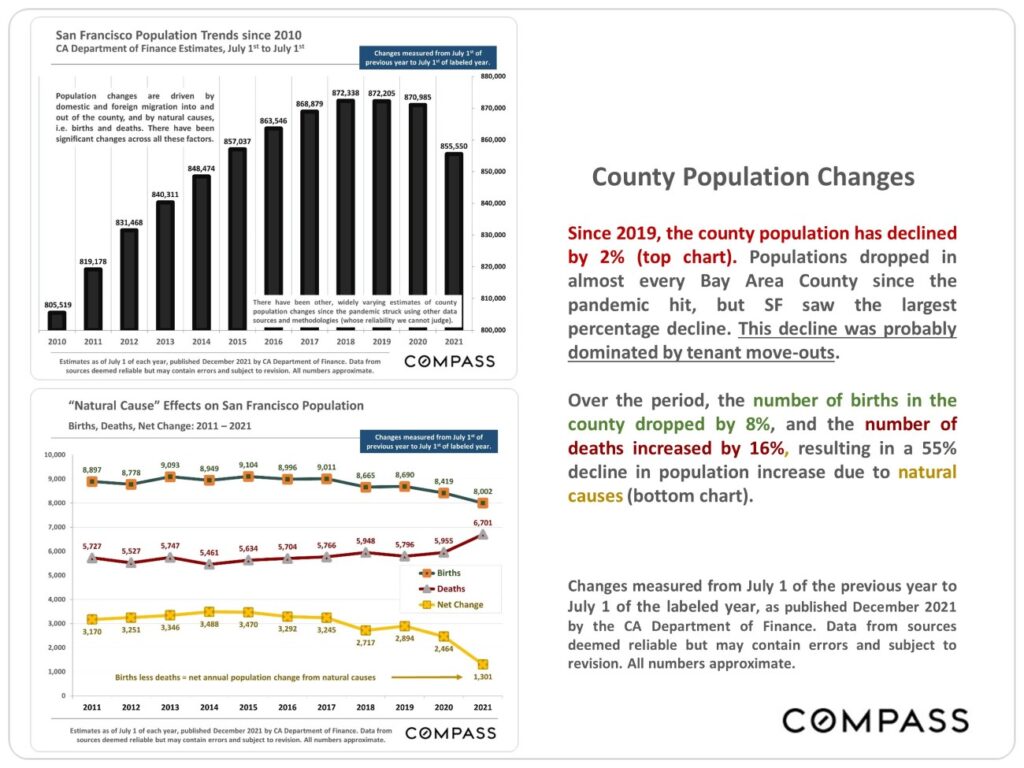
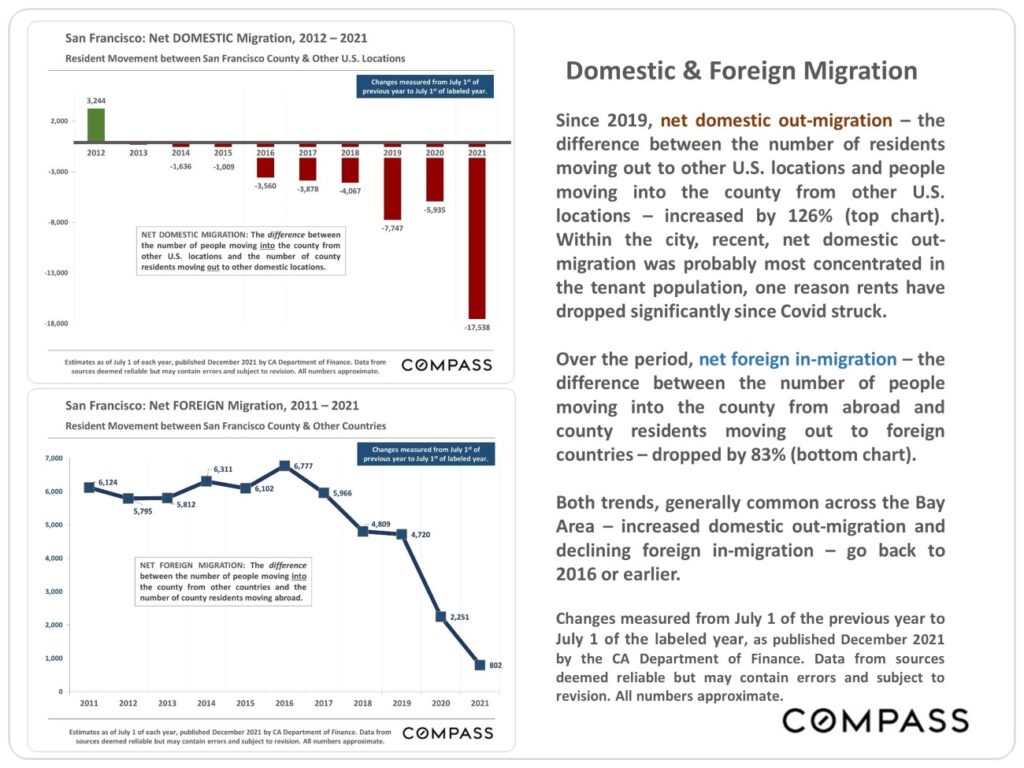
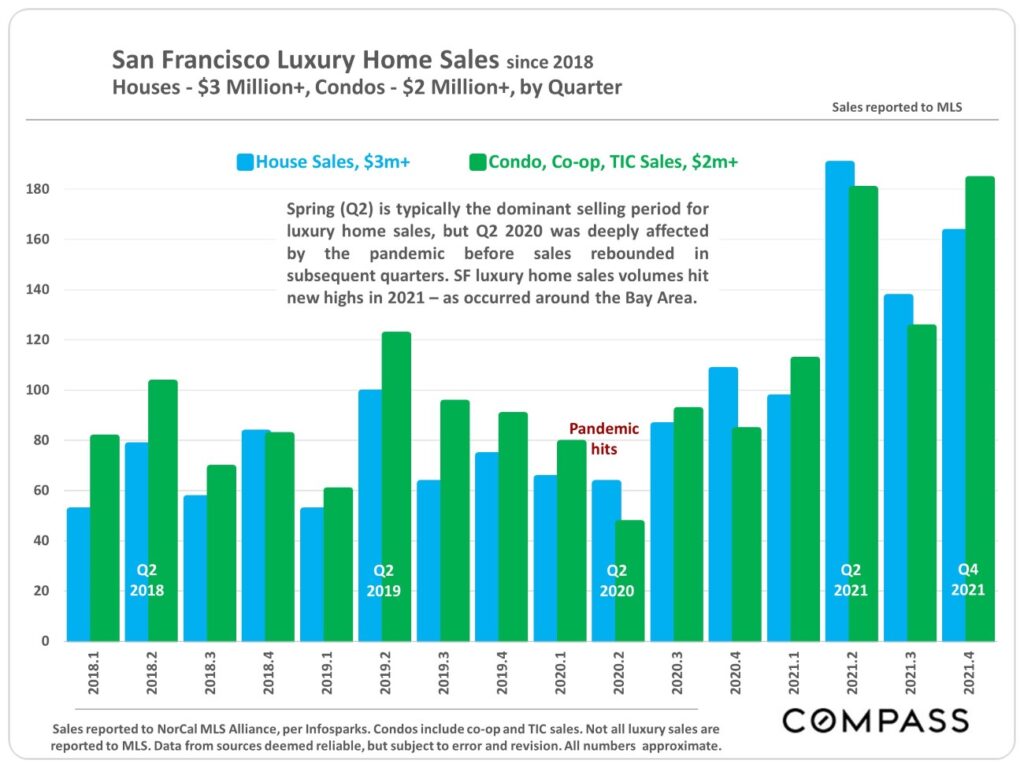
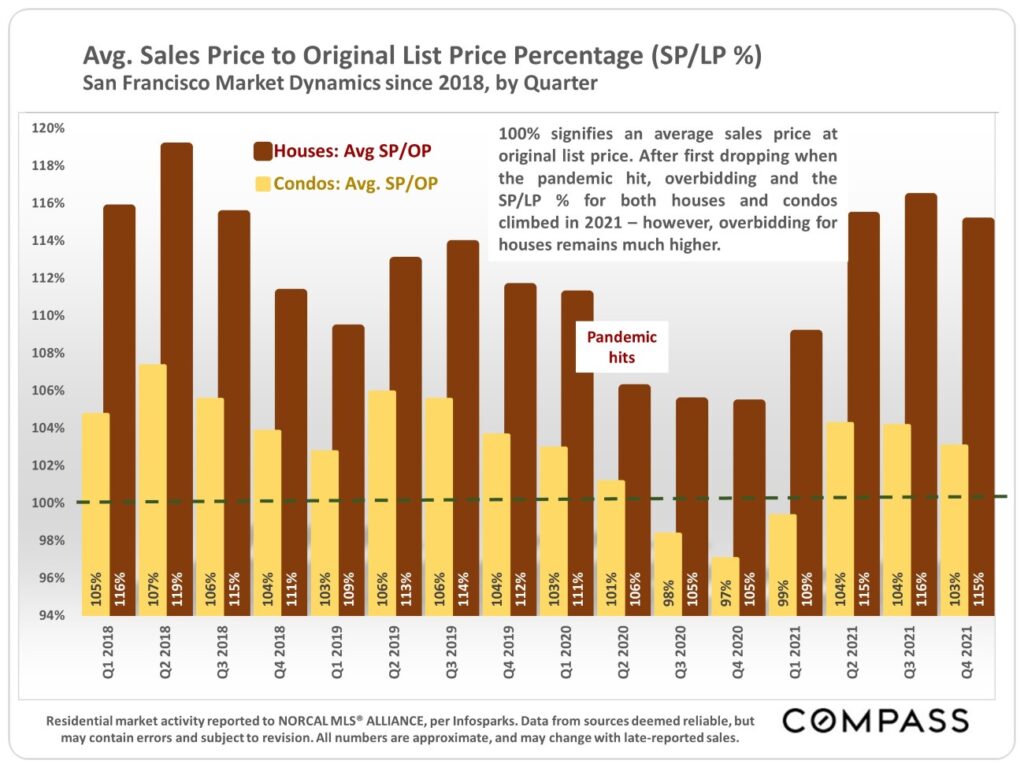
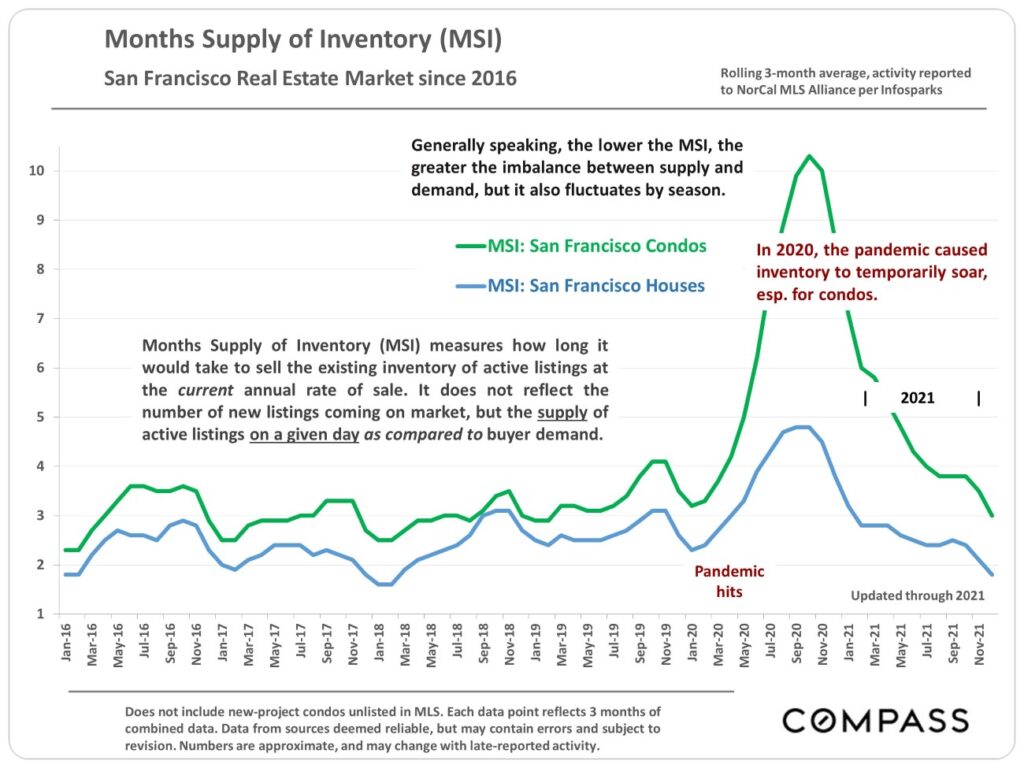
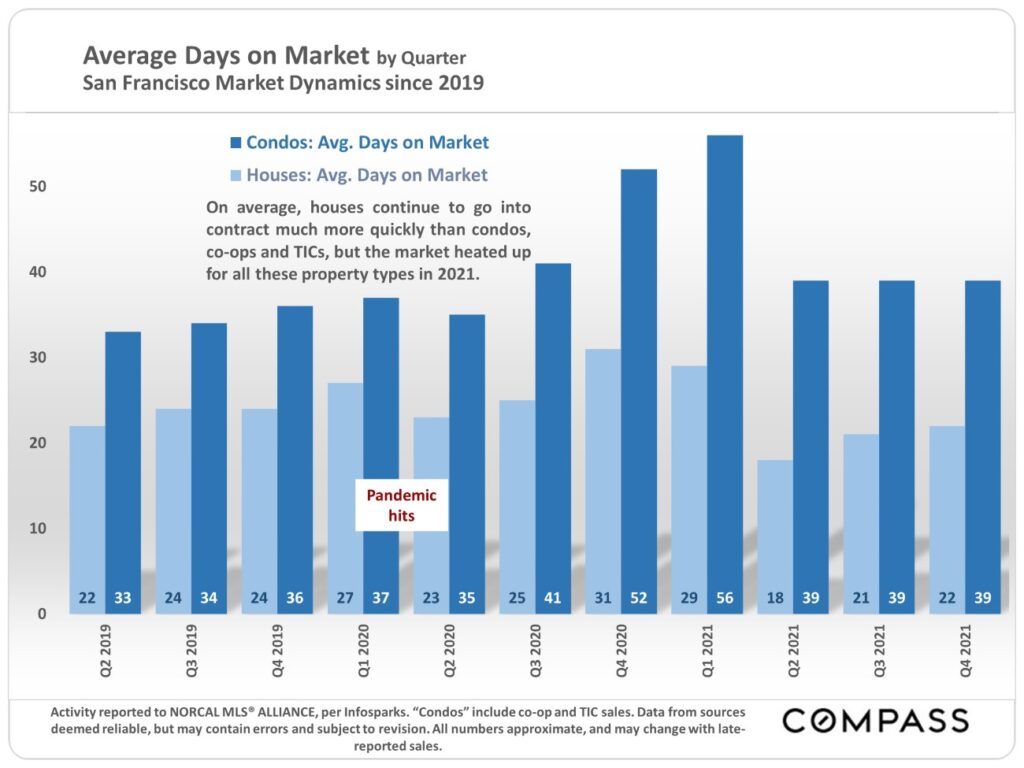
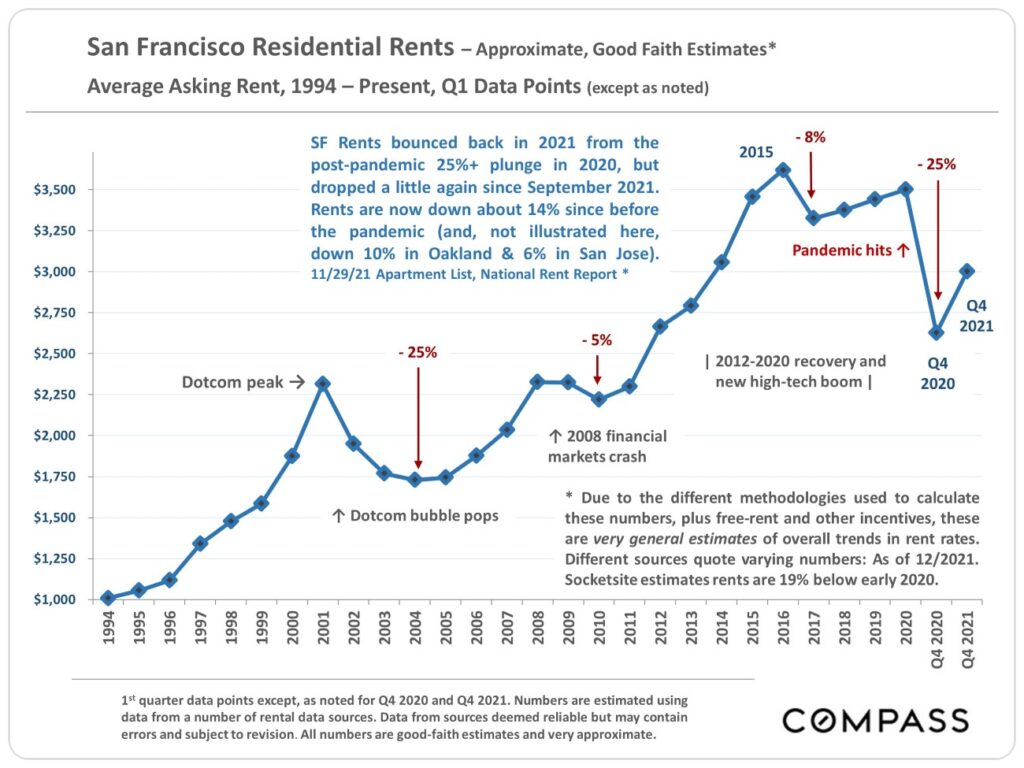
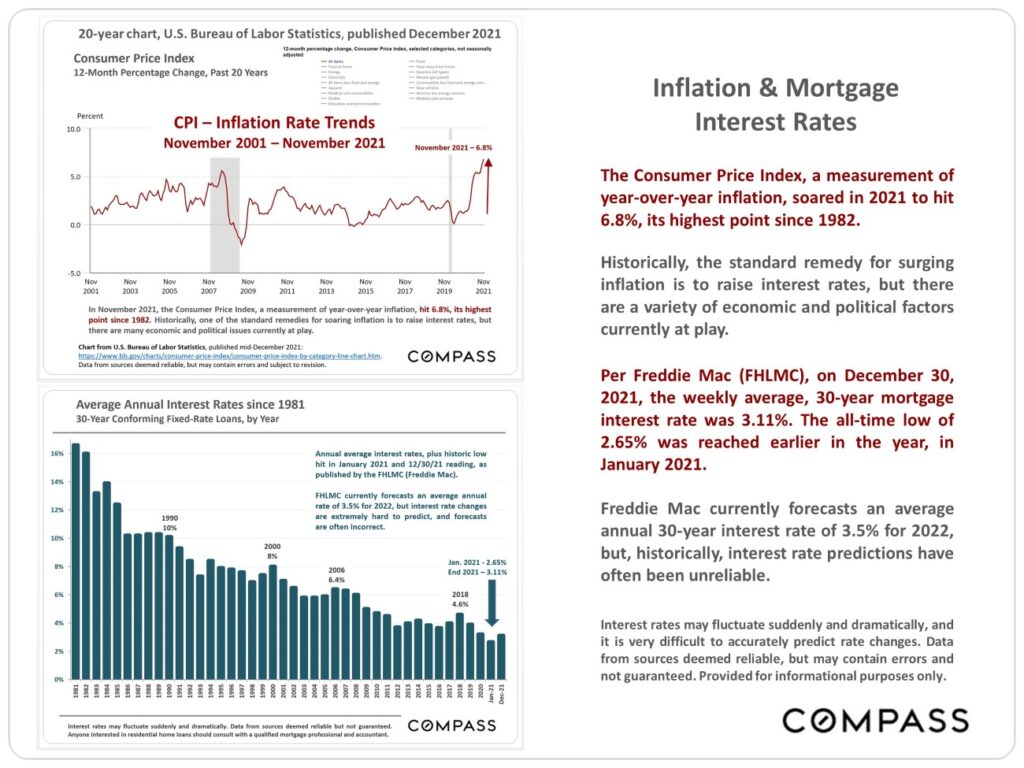
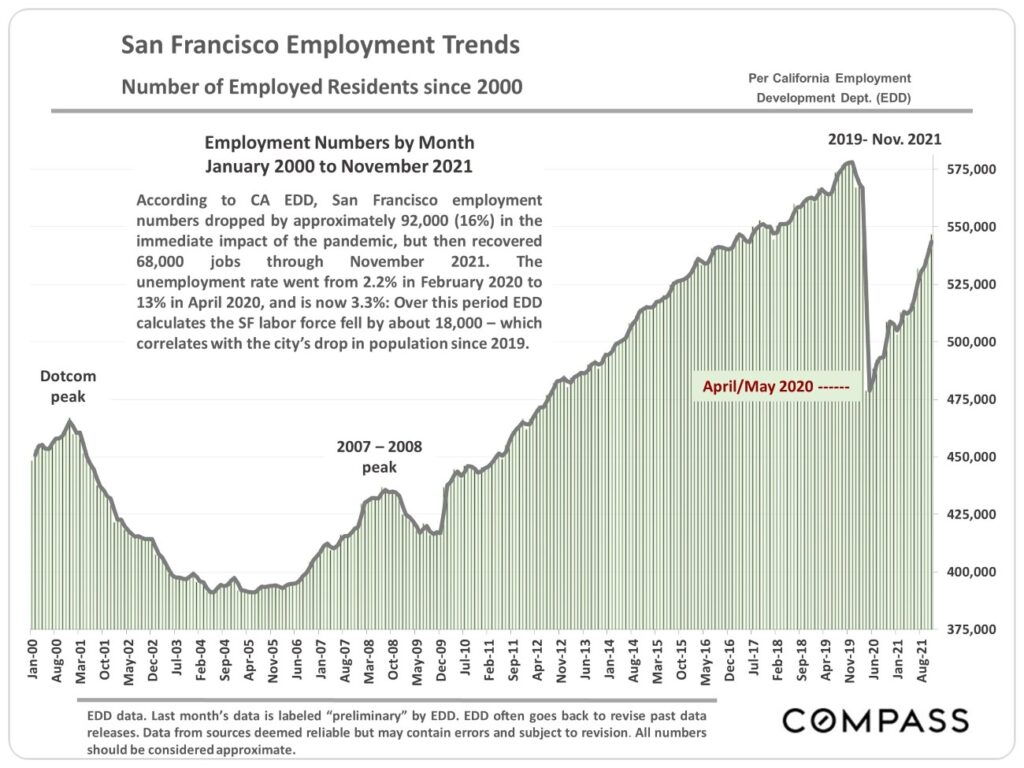
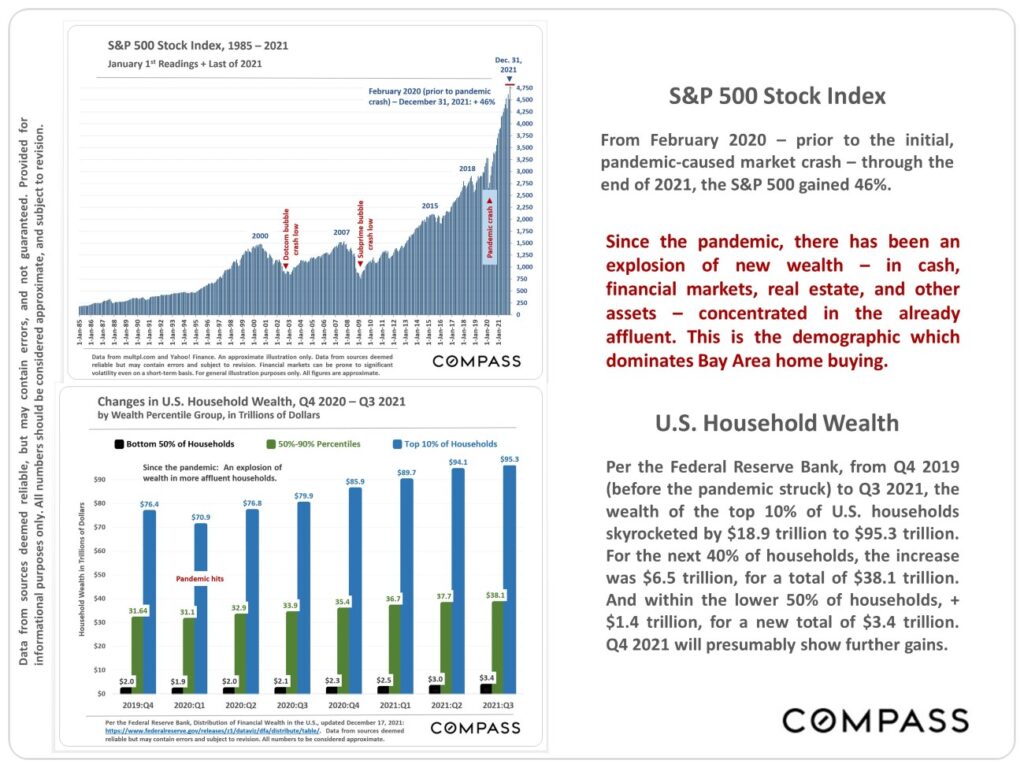
Statistics are generalities, essentially summaries of widely disparate data generated by dozens, hundreds or thousands of unique, individual sales occurring within different time periods. They are best seen not as precise measurements, but as broad, comparative indicators, with reasonable margins of error. Anomalous fluctuations in statistics are not uncommon, especially in smaller, expensive market segments. Last period data should be considered estimates that may change with late-reported data. Different analytics programs sometimes define statistics – such as “active listings,” “days on market,” and “months supply of inventory” – differently: what is most meaningful are not specific calculations but the trends they illustrate. Most listing and sales data derives from the local or regional multi-listing service (MLS) of the area specified in the analysis, but not all listings or sales are reported to MLS and these won’t be reflected in the data. “Homes” signifies real-property, single-household housing units: houses, condos, co-ops, townhouses, duets and TICs (but not mobile homes), as applicable to each market. City/town names refer specifically to the named cities and towns, unless otherwise delineated. Multi-county metro areas will be specified as such. Data from sources deemed reliable, but may contain errors and subject to revision. All numbers to be considered approximate.
Many aspects of value cannot be adequately reflected in median and average statistics: curb appeal, age, condition, amenities, views, lot size, quality of outdoor space, “bonus” rooms, additional parking, quality of location within the neighborhood, and so on. How any of these statistics apply to any particular home is unknown without a specific comparative market analysis. Median Sales Price is that price at which half the properties sold for more and half for less. It may be affected by seasonality, “unusual” events, or changes in inventory and buying trends, as well as by changes in fair market value. The median sales price for an area will often conceal an enormous variety of sales prices in the underlying individual sales.
Dollar per Square Foot is based upon the home’s interior living space and does not include garages, unfinished attics and basements, rooms built without permit, patios, decks or yards (though all those can add value to a home). These figures are usually derived from appraisals or tax records, but are sometimes unreliable (especially for older homes) or unreported altogether. The calculation can only be made on those home sales that reported square footage.
Compass is a real estate broker licensed by the State of California, DRE 01527235. Equal Housing Opportunity. This report has been prepared solely for information purposes. The information herein is based on or derived from information generally available to the public and/or from sources believed to be reliable. No representation or warranty can be given with respect to the accuracy or completeness of the information. Compass disclaims any and all liability relating to this report, including without limitation any express or implied representations or warranties for statements contained in, and omissions from, the report. Nothing contained herein is intended to be or should be read as any regulatory, legal, tax, accounting or other advice and Compass does not provide such advice. All opinions are subject to change without notice. Compass makes no representation regarding the accuracy of any statements regarding any references to the laws, statutes or regulations of any state are those of the author(s). Past performance is no guarantee of future results.




